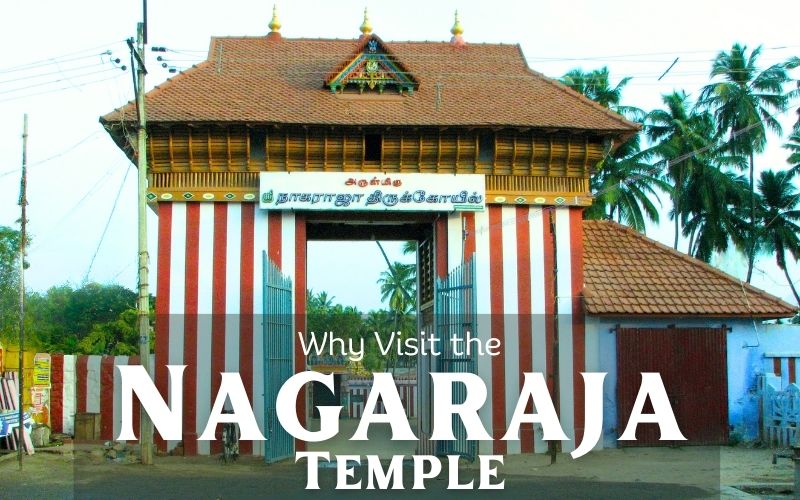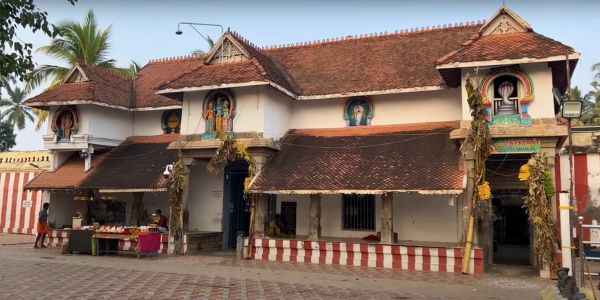Why Visit the Nagaraja Temple in Kanyakumari?

The land from Gokarna to Kanyakumari is called Parasurama Kshetra and is believed to have been formed when Lord Parasurama threw his axe across the Arabian Sea. Since these lands were saline and inhabitable, Lord Parashurama involved Vasuki to make the land fertile. As a mark of respect, Vasuki and other snakes were made guardians of this land. It is no wonder snakes are revered and protected in the areas from Gokarna to Kanyakumari. The Nagaraja Temple in Kanyakumari is an important temple dedicated to Lord Nagaraja, or King of Snakes. The city of Nagercoil derives its name from this temple. Read on to learn more about the temple, including its Jain heritage.
History of the Nagaraja Temple
Some historians believe that the Nagaraja Temple was earlier a Jain temple because of the presence of images of Mahavira and Parshavnath, two Jain thirthankaras on the pillars of the temple. This isn’t surprising since the nagas, i.e., semi-divine beings in half-human and half-cobra form, are revered in Jainism as much as in Hinduism.
Some legends believe that Sri Vira Udaya Marthanda Varma, the ruler of Venad, rebuilt the temple after he was cured of leprosy after performing penance in the temple.
There’s another story that goes that a girl cutting grass for her cows suddenly cut her hand, and blood began to sprout out. Suddenly, she noticed that the sickle had cut a five-headed serpent. She immediately ran away and reported this to her family. The villagers who came to the place decided to build a temple in return for protection. Even today, people believe that nobody around the temple region has ever died of a snake bite.
Architecture of the Temple
The temple has unusual architecture in the sense that the main entrance, called the Mahameru Maligai, resembles a Buddhist vihara. While the temple faces the east, people enter the temple through the south. The main deity of the temple is the five-headed serpent called Nagaraja. The temple also has deities of Lord Ananthakrishnan, Siva, Murugan, and Durga.
But the main sanctum sanctorum of the temple is the mud house with thatched roof. The thatched roof is changed every year during the Tamil month of Aadi. When this occurs, the priests always see a snake on the roof.
Besides these, there’s also a separate sanctorum where hundreds of snake idols are placed. These snakes are believed to safeguard the temple and the area around it.

What’s Special About the Nagaraja Temple?
The main prasadam of the Nagaraja Temple in Kanyakumari is sand believed to be from the snake pit in the sanctum sanctorum. This sand is black from July to December- February and white from February to December-January.
Also, even though Nagaraja is the presiding deity, the Kodimaram is dedicated to Lord Ananthakrishnan. Similarly, the last puja of the day is dedicated to the Lord Anathakrishnan.
Worshipping in the temple is believed to relieve people of the adverse effects of the serpent planets of Rahu and Ketu. Also, people with naga doshas worship in the temple, offering milk and turmeric, with milk having a cooling effect on the snake. Worshipping the Nagaraja Temple helps people find cures for skin diseases.
The Tamil month of Avani is considered special, especially on Sundays, since this is the day of Rahu. Hundreds of people visit the temple during this time and on Ayilyam nakshatra of the Hindu Calendar. If you plan to visit the temple during this time, make sure you book rooms in Kanyakumari earlier.
Visit us if you are looking for affordable hotels in Kanyakumari. We promise the best stay at the best price.
